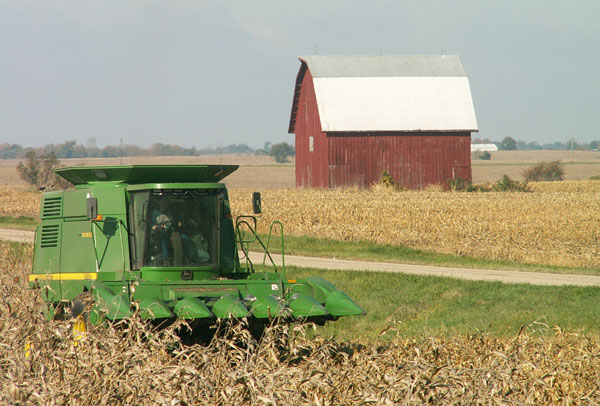Monitoring farmers with satellites and planes
Farmers who receive excessive subsidies from the European Union (EU) or violate agricultural principles are most likely to be discovered through a camera in the sky.
European agriculture consumes billions of dollars in subsidies each year, so EU agricultural inspectors are looking to technology to monitor waste and mistakes.
The satellites have been used for many years, and unmanned aircraft are being used for testing.
The cost to monitor by satellite photos is only 1/3 of the cost for an inspector to the monitoring site. The satellites can quickly cover a large area and provide detailed photos.

Satellite and camera attached to the aircraft provide detailed images on the field.
The satellite provides an accurate map of the farm, clearly showing the areas eligible for benefits.
Satellite imagery indicates that farmers have kept their land 'in good agricultural and environmental conditions' to qualify for subsidies by revealing the image of farmers complying with the regulations. whether the fence, pond, or buffer zone is around the growing area.
A farmer who breaks the rules is at risk of losing 3% of the direct subsidy - and more if repeating it.
Unmanned surveillance aircraft is currently being used to monitor the cultivation of grapes in southern France, in Italy and the Catalonia region of Spain, where authorities say the images are of high resolution. Ideal for testing typical mixed crops of the Mediterranean region.
The EU intends not only to use unmanned aircraft to track crops or farms, but also in topographic monitoring, cargo transport, border monitoring, illegal immigration and drug trafficking. , and interfering with natural or industrial disasters.
- Satellite detection of forest fire
- SpaceX brought two satellites to monitor the Earth's water level on the universe
- Successfully launched Sentinel-1A satellite with Soyuz missiles
- America has successfully launched a secret spy satellite
- China launches 24 ballistic missile monitoring satellites?
- Aircraft capable of replacing satellites
- British farmers use the Internet to raise cattle
- New era for global meteorological observation system
- FPT studied satellites monitoring the East Sea
- Improving chimney emissions monitoring capacity in Vietnam
- Great way to cool the barn in the hot summer
- France successfully launched satellite monitoring of climate change
 'Barefoot engineer' invents a pipeless pump
'Barefoot engineer' invents a pipeless pump Process of handling dead pigs due to disease
Process of handling dead pigs due to disease Radiometer
Radiometer Warp Engine: Technology brings us closer to the speed of light
Warp Engine: Technology brings us closer to the speed of light Artificial satellite missing for 40 years suddenly returns, leaving scientists bewildered
Artificial satellite missing for 40 years suddenly returns, leaving scientists bewildered  What exactly is the space signal detected by Tesla?
What exactly is the space signal detected by Tesla?  Satellite debris poses a serious threat to the atmosphere
Satellite debris poses a serious threat to the atmosphere  Declassified spy satellite, 1,400-year-old ghost town appears
Declassified spy satellite, 1,400-year-old ghost town appears  Britain's oldest satellite mysteriously moves
Britain's oldest satellite mysteriously moves  Boeing satellite explodes in space
Boeing satellite explodes in space 